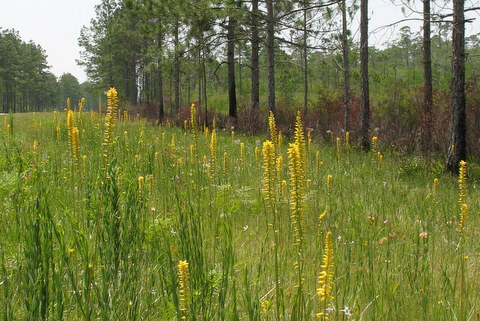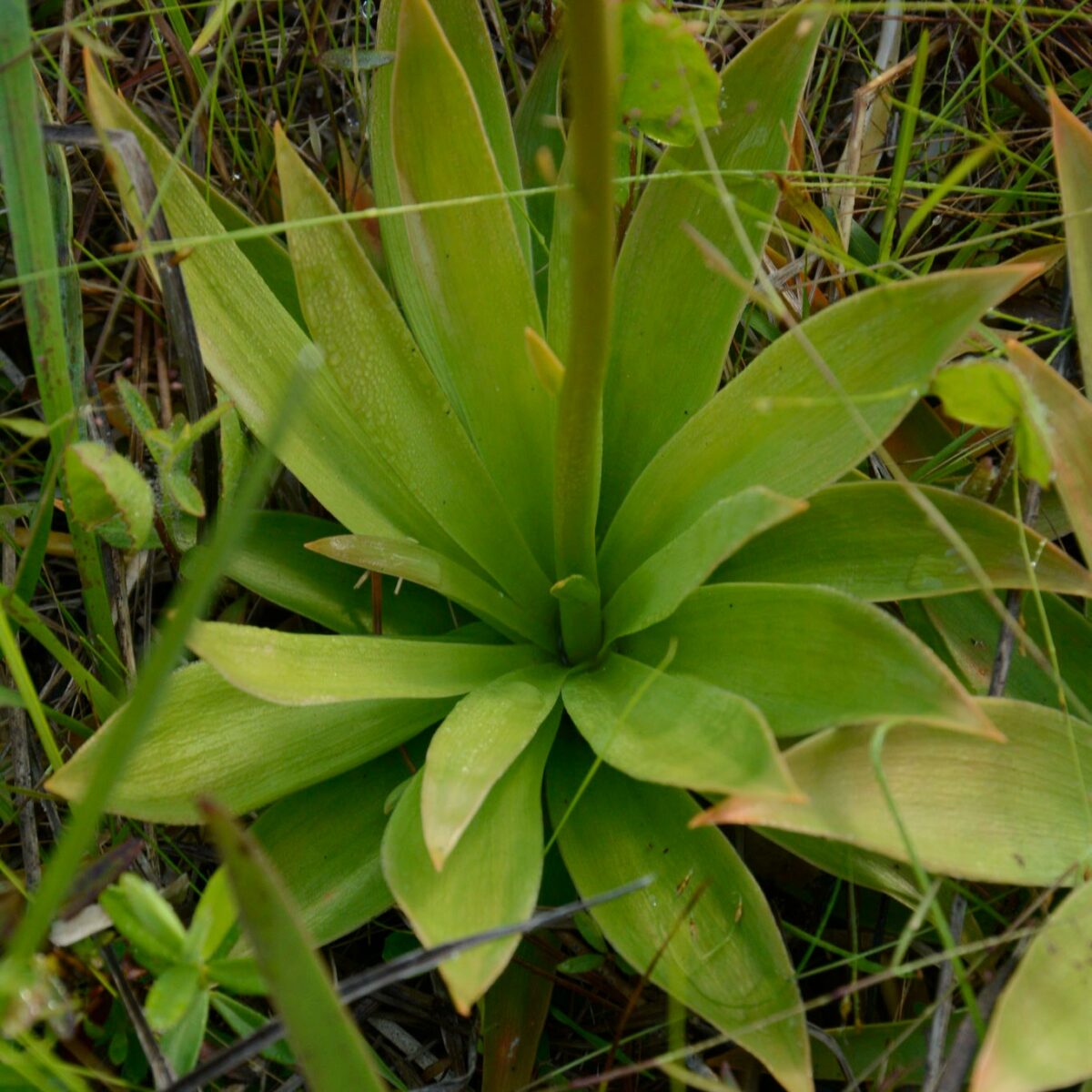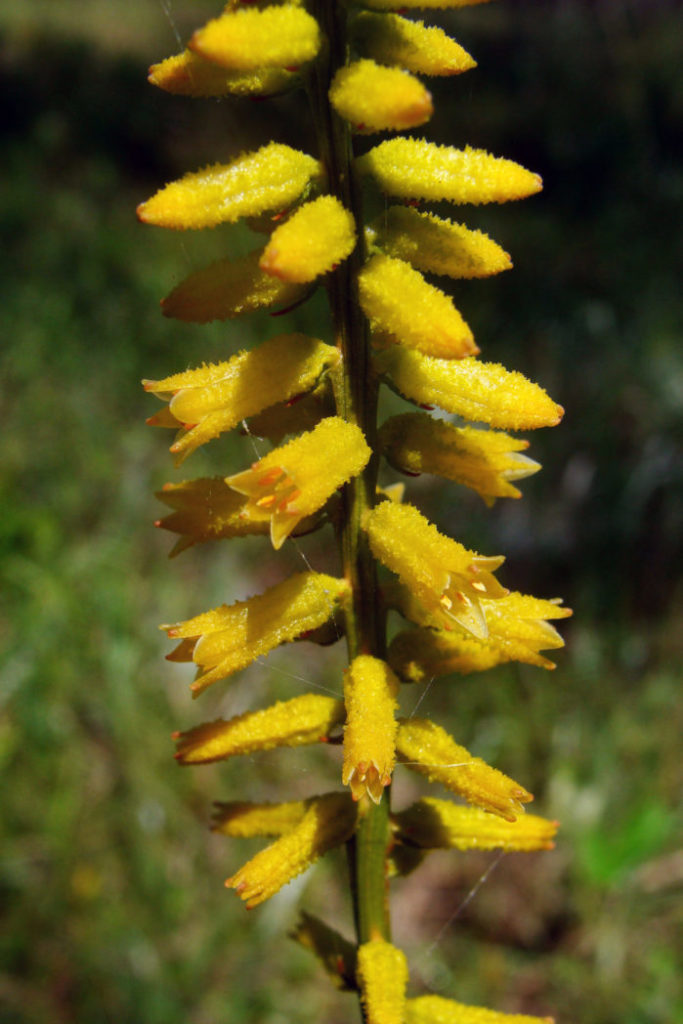Yellow colicroot
Pictured above: Colicroot (Aletris lutea) by Eleanor Dietrich. Click on terms for botanical definitions. View post as a PDF.
Yellow colicroot (Aletris lutea) is a slender, short-lived perennial wildflower found in mesic pine flatwoods, wet prairies, open seepage areas and moist roadsides and ruderal sites throughout much of Florida. It typically blooms in late winter or early spring through early to mid-summer. The flowers are visited by bees, butterflies and other pollinators such as beeflies. Of the five species of Aletris native to Florida, Yellow colicroot is the most common and widely distributed (see native range below).

Yellow colicroot’s small flowers are yellow (occasionally white), tubular and born in long terminal spikes. Flowers have six fused tepals with bumpy outer surfaces. The flower stalk rises from the center of a basal rosette. Stem leaves are reduced or absent. Basal leaves are linear to lance-shaped, yellow-green and leathery with pointed tips. Leaf margins are entire. Seeds are born in three-parted capsules.
Some sources suggest the genus Aletris is named for Aleto, a Greek slave who ground corn for her master. It may allude to the corn-kernel shape or cornmeal texture of the flowers. The species epithet, lutea, is from the Latin luteum, meaning “yellow.” Plants in the Aletris genus were previously classified in the Liliaceae family. Although no medicinal uses have been documented for Aletris lutea, other members of the genus have been used as a mild sedative, and to treat joint and muscle pain, menstrual disorders, and digestion problems such as colic (hence the common name).

Photo by Siddarth Machado (CC BY-NC-ND 2.0)
Family: Nartheciaceae (Bog asphodel family)
Native range: Nearly throughout except Broward and St. Lucie counties and the Keys in South Florida; Citrus County north to Suwannee and west to Jefferson County in North Florida; and Franklin and Gadsden counties in the Panhandle.
To see where natural populations of Yellow colicroot have been vouchered, visit www.florida.plantatlas.usf.edu.
Hardiness: Zones 8A–10B
Soil: Moist to wet, seasonally inundated, acidic sandy or calcareous soils
Exposure: Full sun to partial shade
Growth habit: 3’+tall
Propagation: Seeds, division
Garden tips: Yellow colicroot is not suitable for all landscapes as it requires regular moisture. It is tall and thin and so plant in groups and behind shorter plants where it will be visible. Because it is deciduous, it should be planted with other tall species that flower in the fall to provide color and habitat in its absence. The plant is fire-adapted, but is not salt tolerant.
Yellow colicroot is occasionally available from nurseries that specialize in Florida native plants. Growers may post availability on www.PlantRealFlorida.org.

